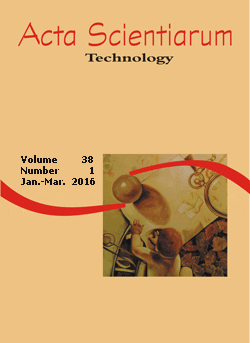<b>Impact of electrical stunning on fish behavior and meat quality of pacu (<i>Piaractus mesopotamicus</i>)
DOI:
https://doi.org/10.4025/actascitechnol.v38i1.27103Keywords:
fillets color, slaughter, native species, fishAbstract
Electrical stunning is considered one of less stressful fish stunning method. However, for its efficiency, it is important to determine the best way of application of the electrical variables. The aim of this study was to evaluate the effect of different voltages (100, 150, and 200 V) of alternating current (AC) or direct current (DC), frequency of 50 Hz, for 180 s exposure, concerning the aspects of behavior and meat quality of pacu (Piaractus mesopotamicus). Fish subjected to AC remained unconscious longer, evaluated by behavior analysis, when compared to DC. The pacu subjected to 100 AC, 200 AC and 100 DC showed less bleeding in the fillets. The lightness (L*) of the fillets were higher in 150 AC, 150 DC and 100 DC, followed by 200 and 100 AC. The redness (a*) in pacu fillets were moderate in treatments 200 and 150 AC and less intense in treatments 100 DC and 100 AC. The yellowness (b*) was higher in fish fillets treatment 150 DC and lower in 100 AC. Therefore, the 200 V alternating current (AC) used in water stunning caused apparent unconsciousness of up to 4 min. after exposure and less bleeding in fillets, thus it is a suitable stunning method to be recommended for the pacu processing industry.
Â
Downloads
Downloads
Additional Files
Published
How to Cite
Issue
Section
License
DECLARATION OF ORIGINALITY AND COPYRIGHTS
I Declare that current article is original and has not been submitted for publication, in part or in whole, to any other national or international journal.
The copyrights belong exclusively to the authors. Published content is licensed under Creative Commons Attribution 4.0 (CC BY 4.0) guidelines, which allows sharing (copy and distribution of the material in any medium or format) and adaptation (remix, transform, and build upon the material) for any purpose, even commercially, under the terms of attribution.
Read this link for further information on how to use CC BY 4.0 properly.















8.png)




